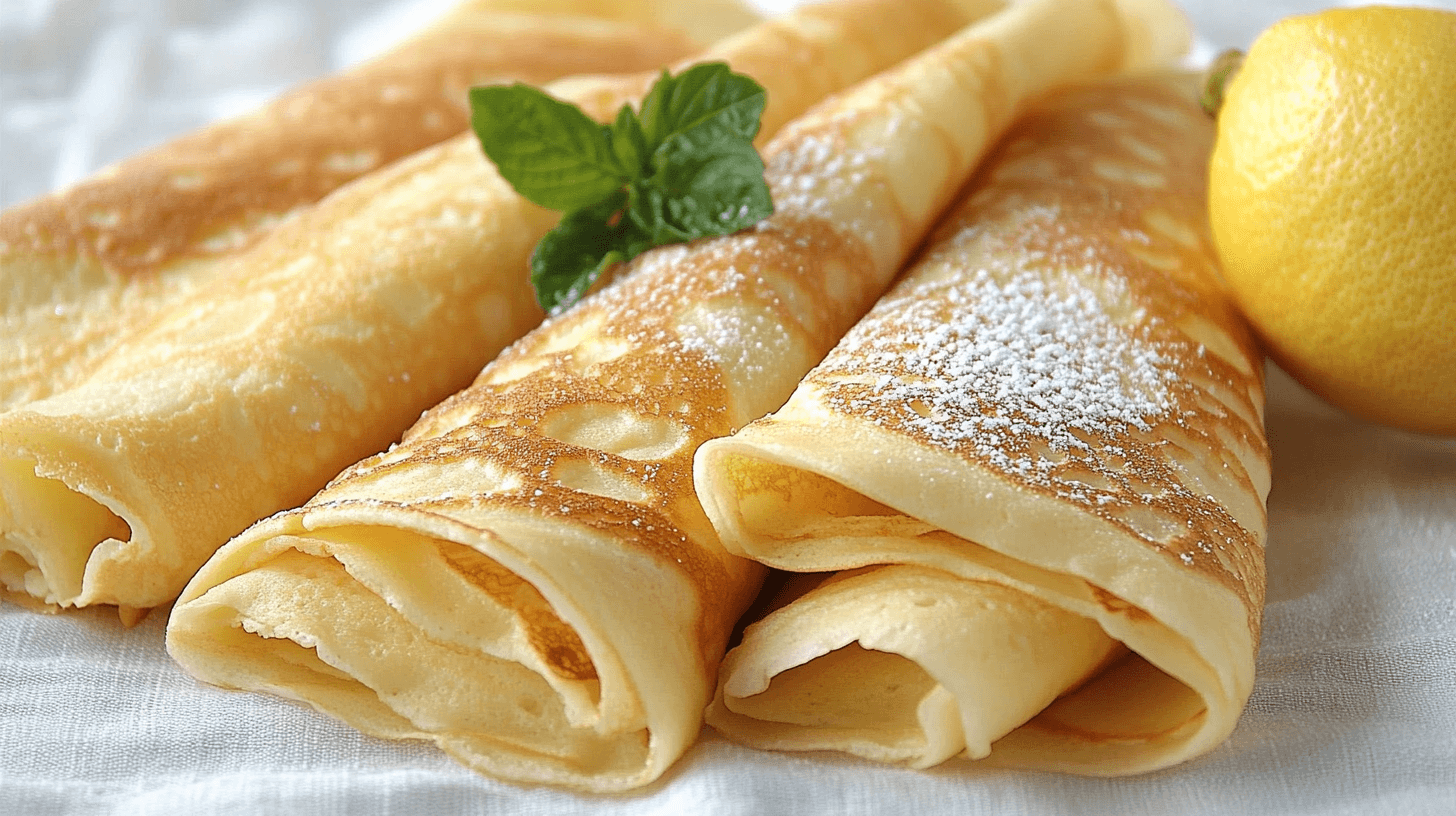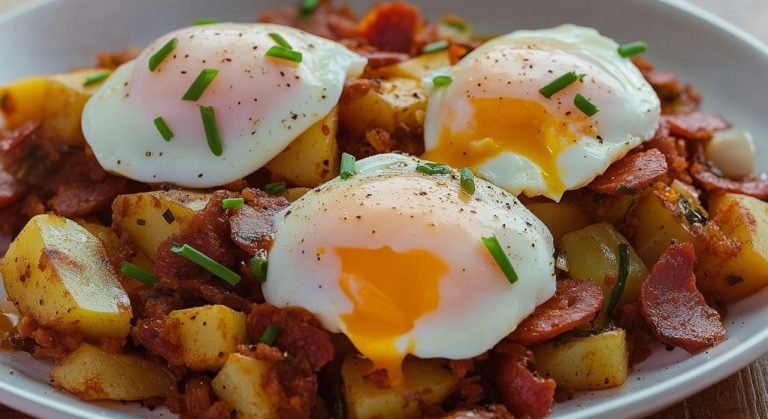Did you know that crêpes originated in Brittany, a region in northwestern France, during the 13th century? These thin, delicate pancakes have since become a beloved staple of French cuisine and have spread across the globe. While you might think crêpes are complex to make, they're actually quite simple and versatile. With just a few basic ingredients and the right technique, you can create both sweet and savory versions that'll impress your family and friends. But there's more to crêpes than just their ease of preparation – they offer a canvas for culinary creativity that you won't want to miss out on.
Key Takeaways
- Crêpes are thin French pancakes made from a simple batter of flour, eggs, milk, and butter.
- The batter should be mixed until smooth and rested for at least 30 minutes before cooking.
- Cook crêpes in a hot, lightly greased pan, swirling to spread the batter thinly.
- Basic crêpes can be served with sweet or savory fillings, offering versatility in meal options.
- Mastering the technique of crêpe-making requires practice but yields delicious results with crispy edges.
History
Crêpes' origins can be traced back to Brittany, a region in northwestern France, during the 13th century. Made from buckwheat flour, these early crêpes were known as galettes and served as a staple food for the region's peasants. Over time, the recipe evolved, and wheat flour became more commonly used, resulting in the lighter, more delicate crêpes recognized today.
As you explore the history of crêpes, you'll discover that they've played a significant role in French cuisine for centuries. In the 15th century, crêpes became associated with Candlemas, a Christian holiday celebrated on February 2nd. It was believed that if you could flip a crêpe successfully while holding a coin in your other hand, you'd have good luck for the rest of the year. This tradition has persisted, and now you'll find many French families making crêpes on Candlemas day.
The popularity of crêpes spread beyond France's borders in the 20th century, becoming a beloved treat worldwide, with countless variations and fillings to suit every palate.
Recipe
Basic Crêpes are a versatile French pancake that can be enjoyed in both sweet and savory variations. These thin, delicate pancakes are surprisingly simple to make and require only a few basic ingredients. With their light texture and ability to complement a wide range of fillings, crêpes are perfect for breakfast, brunch, or dessert.
This recipe yields approximately 8-10 crêpes, depending on the size of your pan. The batter comes together quickly and easily, making it a great option for both weekday breakfasts and weekend brunches. Once you master the basic technique, you can experiment with different flavors and fillings to create your own signature crêpe dishes.
- 1 cup all-purpose flour
- 2 eggs
- 1 cup milk
- 2 tablespoons melted butter
- 1/4 teaspoon salt
In a large mixing bowl, whisk together the flour and salt. Create a well in the center and add the eggs, milk, and melted butter. Whisk the wet ingredients together, gradually incorporating the flour mixture until you have a smooth batter. Let the batter rest for at least 30 minutes.
Heat a non-stick pan over medium heat and lightly grease it with butter. Pour about 1/4 cup of batter into the pan, tilting and swirling to spread it evenly. Cook for about 1-2 minutes until the edges start to brown, then flip and cook for another 30 seconds. Repeat with the remaining batter.
For best results, let the batter rest in the refrigerator for at least 30 minutes or up to overnight. This allows the flour to fully absorb the liquid and results in more tender crêpes. If the batter becomes too thick after resting, thin it out with a little milk. Remember that the first crêpe is often a "test" crêpe and may not turn out perfectly. Don't be discouraged – the rest will be delicious!
Cooking Steps
You're ready to start cooking your crêpes, and the process is simpler than you might think.
First, you'll mix the dry ingredients together, then add the wet ingredients and let the batter rest for best texture.
Once your pan is heated and lightly greased, you'll pour in the batter and cook each crêpe to golden perfection, creating a stack of thin, delicate pancakes that are sure to impress.
Step 1. Mix Dry Ingredients Together
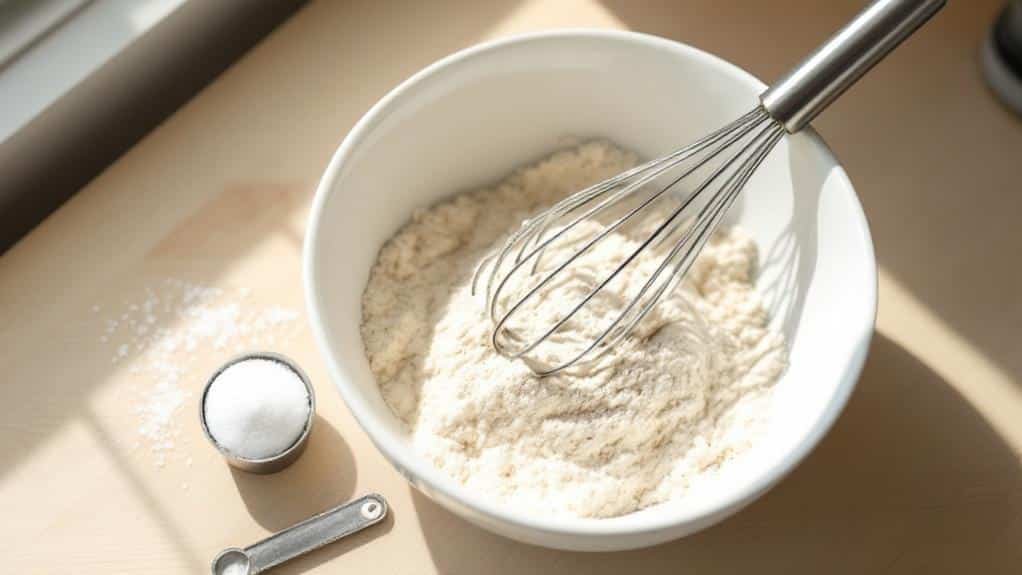
The first step in creating your crêpe batter is to combine the dry ingredients. You'll need a large mixing bowl, where you'll start by measuring out one cup of all-purpose flour. This versatile flour, which has been a staple in French kitchens for centuries, provides the perfect structure for your delicate crêpes.
Next, add a quarter teaspoon of salt to the flour. While it may seem like a small amount, this pinch of salt is essential for enhancing the flavor of your crêpes, balancing out the sweetness and bringing out the subtle nutty notes of the flour. Using a whisk or fork, gently mix these dry ingredients together, ensuring they're evenly distributed.
As you're stirring, you might notice the fine, powdery texture of the flour, which will soon transform into a smooth, velvety batter. This simple combination of flour and salt forms the foundation of your crêpes, setting the stage for the delicious treats you'll soon be enjoying.
With your dry ingredients mixed, you're ready to move on to the next exciting step in your crêpe-making adventure.
Step 2. Add Wet Ingredients
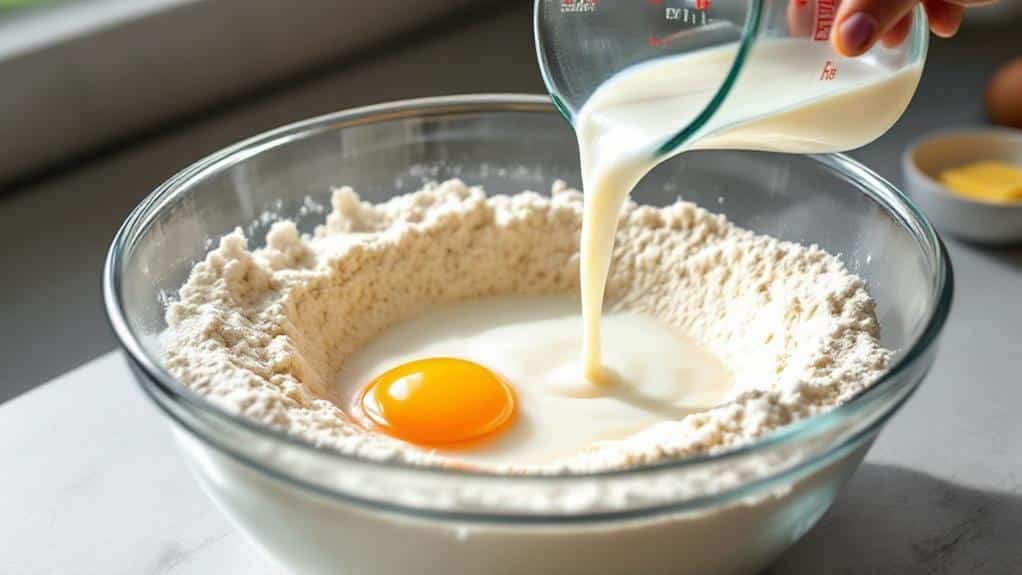
With your dry ingredients thoroughly combined, it's time to introduce the wet components that will transform your mixture into a silky crêpe batter. Create a well in the center of your flour mixture, which will serve as a cradle for the eggs, milk, and melted butter.
Crack two eggs directly into the well, then pour in the cup of milk and the melted butter. This method, dating back to traditional French cooking techniques, allows for a gradual incorporation of the wet ingredients, ensuring a smooth, lump-free batter.
Using a whisk, start beating the wet ingredients in the center, slowly drawing in the flour from the edges. As you whisk, you'll see the batter come together, changing from a lumpy mess to a smooth, pourable consistency.
The key is to whisk vigorously, incorporating air into the batter, which will result in lighter, more delicate crêpes. If you notice any stubborn flour lumps, don't hesitate to press them against the side of the bowl with your whisk.
Your finished batter should be thin and glossy, reminiscent of heavy cream.
Step 3. Let Batter Rest
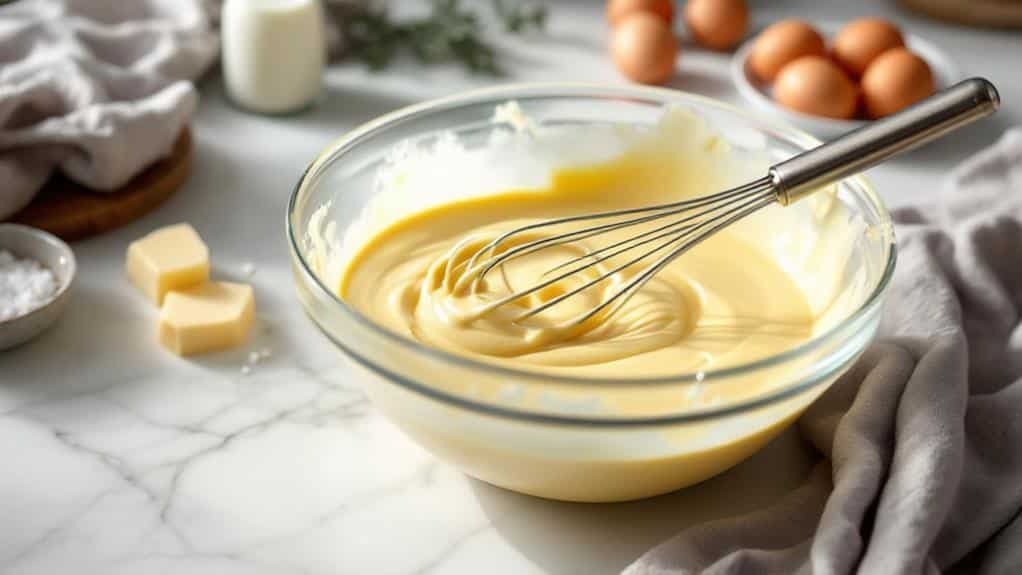
After whisking your batter to silky perfection, allowing it to rest becomes a vital step. This important process enables the flour to fully soak up the liquid, resulting in more tender crêpes.
You'll want to cover your bowl with plastic wrap and refrigerate it for at least 30 minutes, though you can leave it overnight if you're planning ahead. As the batter rests, the gluten in the flour relaxes, which helps prevent tough, chewy crêpes. This period of resting also allows any air bubbles to rise to the surface and burst, ensuring your crêpes will be smooth and free of lumps.
While you're waiting, you can prepare your fillings or toppings. When you're prepared to cook, give the batter a gentle stir. If it has thickened too much during its resting time, simply thin it out with a splash of milk. Keep in mind, the ideal crêpe batter should have a consistency similar to heavy cream – thin enough to spread easily in the pan, but thick enough to coat the back of a spoon.
With your rested batter, you're now equipped to create delicate, lacy crêpes that would make any French chef proud.
Step 4. Heat Pan and Grease
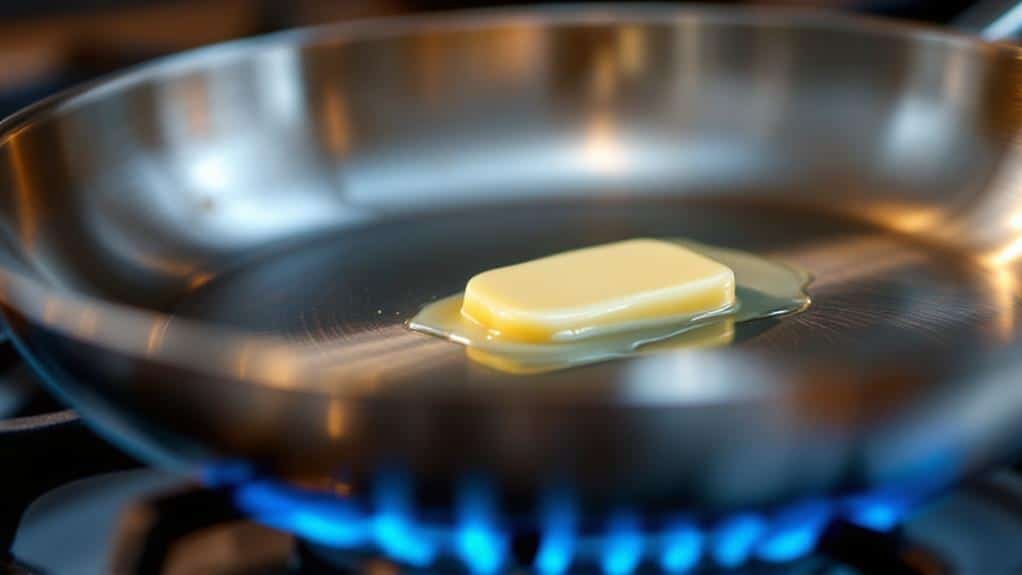
Once your batter has rested, it's time to fire up the stove. Place a non-stick pan or a well-seasoned crepe pan over medium heat, allowing it to warm up gradually.
While the pan heats, you'll want to prepare your greasing method. Traditionally, French chefs use a small piece of potato skewered on a fork to apply a thin layer of butter, but you can use a paper towel or silicone brush if you prefer.
When the pan is hot enough that a drop of water sizzles on contact, it's ready for greasing. Apply a light coating of butter, making sure to cover the entire cooking surface. You'll only need to grease the pan for the first crepe; subsequent crepes will cook perfectly without additional butter.
As you work, you'll notice the pan developing a perfect temperature, which is essential for achieving those signature lacy edges and golden-brown spots. If the pan starts smoking, simply remove it from the heat for a moment to cool down before continuing.
Your perfectly heated and greased pan is now ready for crepe-making magic!
Step 5. Pour and Cook Crêpes
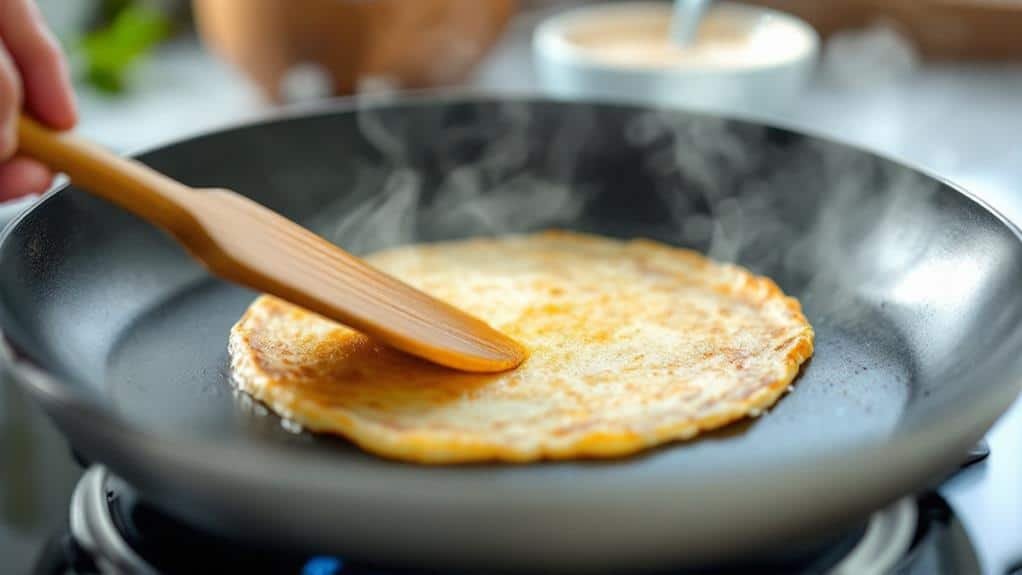
The next step in creating perfect crêpes involves pouring and cooking the batter. Once your pan is heated and lightly greased, it's time to bring your crêpes to life.
Take about 1/4 cup of batter and pour it into the center of the pan. Quickly tilt and swirl the pan in a circular motion, allowing the batter to spread evenly into a thin layer. As the crêpe cooks, you'll notice the edges starting to brown and curl slightly, which usually takes about 1-2 minutes.
When the top of the crêpe looks dry and set, it's time to flip. Gently slide a spatula under the edge and, with a quick motion, turn the crêpe over. Cook the other side for about 30 seconds until golden brown spots appear.
Final Thoughts
Mastering the art of crêpe-making often requires practice, but don't let that discourage you. With each attempt, you'll find your technique improving, and soon you'll be creating perfectly thin, golden crêpes that would make any French chef proud. Remember, crêpes have been a staple of French cuisine for centuries, originating in Brittany and spreading throughout the country. As you perfect your skills, you'll be participating in a rich culinary tradition that has delighted generations of food lovers.
Don't be afraid to experiment with different fillings and toppings. While classic combinations like Nutella and banana or ham and cheese are always delicious, you can let your creativity shine by trying unique flavor combinations. Sweet or savory, the possibilities are endless.
Keep in mind that crêpes are best enjoyed fresh off the pan, when they're still warm and slightly crispy around the edges. If you're serving a crowd, you can keep them warm in a low oven, stacked between layers of parchment paper. With practice and patience, you'll soon be whipping up crêpes like a pro, impressing family and friends with your newfound culinary skills.
Frequently Asked Questions
Can Crêpes Be Made Ahead of Time and Stored?
Yes, you can make crêpes ahead of time. Once cooled, stack them with wax paper between each layer. Store them in an airtight container in the fridge for up to 3 days or freeze for up to 2 months.
What's the Best Pan to Use for Making Crêpes?
For your culinary endeavors, you'll want a specialized crêpe pan. It's a flat, shallow pan with low sides. If you don't have one, don't worry! A non-stick skillet works well too. Just make sure it's wide and flat-bottomed.
Are There Gluten-Free Alternatives for Making Crêpes?
Yes, you can make gluten-free crêpes! Try using a blend of rice flour, buckwheat flour, and tapioca starch. You'll also need to add xanthan gum for texture. Alternatively, you can use pre-made gluten-free flour mixes specifically designed for crêpes.
How Do You Prevent Crêpes From Sticking to the Pan?
To prevent sticking, you'll want to use a non-stick pan and lightly grease it with butter before each crêpe. Confirm your pan is hot enough, and don't flip too early. A thin spatula helps for easy flipping.
Can Crêpe Batter Be Made Using a Blender?
Yes, you can easily make crêpe batter in a blender. Just toss all your ingredients in, blend until smooth, and you're done! It's a quick and efficient method that guarantees a lump-free batter every time.

